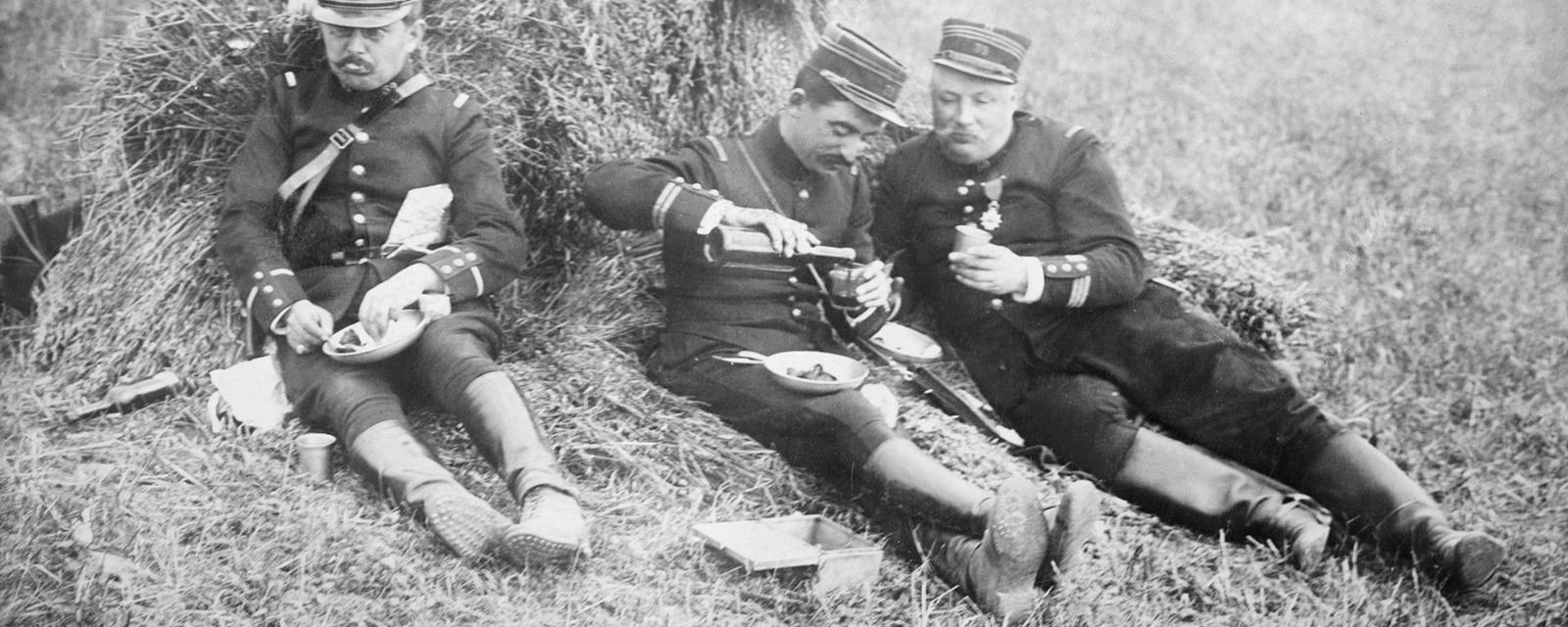Soldiers may find themselves a long way from the comforts of a kitchen – but they always have to eat. BBC Future looks at the clever tricks to make food to eat on the hoof.

When soldiers go into the field, they carry with them tiny miracles of engineering. And we’re not just talking about weaponry: some very technical and forward-thinking research has gone into military meals. They must be light and easy to carry, capable of staying edible even after weeks in the hot sun, supply the surprisingly high number of calories that soldiers in the field need (more than 4,000 a day), and, of course, not cost the taxpayer an inordinate amount. That has led to some clever tricks of science that have even made their way into the goods you may find on your shopping list.
One of the most interesting items in army rations, from an innovation perspective, is the bread, says writer Anastacia Marx de Salcedo, author of the book Combat-Ready Kitchen. Freshly baked bread begins going stale the moment it comes out of the oven, as strands of a starch called amylose spread all throughout its structure and start to harden. Amylose can be snipped up by enzymes called amylases, but these are denatured by heat as the bread cooks – hence the generally unappealing, razor-to-the-gums qualities of a baguette after a few days.

In the mid-20th Century, however, food scientists at Kansas State College with connections to the US military discovered that adding amylases that stand up to heat changed the equation. These enzymes, which come from heat-tolerant bacteria, kept right on snipping after baking, keeping bread almost eerily soft and flexible and giving it a long shelf-life.
Bread treated this way eventually made it into pouches in military rations. “I’m not going to say it’s seriously tasty,” Salcedo says with a laugh, “but it works.” Similar bread also arrived, you might be surprised to hear, in your supermarket. Almost all bread in grocery stores today has bacterial amylases working to keep it squishy for the long term, as private industries have commercialised the insights of earlier researchers. Military research is also behind today’s packets of dry active yeast, Salcedo says. Before that work, which focused on putting yeast into suspended animation so it could be shipped around the world, the fungus was sold in refrigerated cakes that had to be used within about 10 days.
Another interesting bit of army ration chemistry involves a concept called water activity. A moist food is a much friendlier place for bacteria and mould than a dry one, to be sure – just put a nice wheel of Brie and a brittle corn chip out to ripen and see which goes first. But what truly matters for extending shelf life is not a food’s absolute moisture content, but rather how many of those water molecules are floating around unattached to anything else.
Those are the ones that can become food-safety troublemakers, causing spoilage. It turns out that food doesn’t need to be dried to the point of mummification to last – all that needs to happen is that the water activity, as this quality is called, needs to be brought down into a certain range.
The US military and NASA helped fund important early work in the mid-20th Century into manipulating water activity to keep food fresh for long periods of time, Salcedo says. “It allowed food scientists to suddenly be able to create moist-seeming foods that were hostile to life – at least microbiological life,” she says.
Adding salt and sugar to foods ties up the water molecules without making the food seem dry. Furthermore, keeping a crisp cracker and a moist cheese together in a bag for years, without the crackers losing their crunch or the cheese drying out, is possible as long as they each have the same water activity. In that case, “the water won’t migrate between the two,” explains Salcedo. It’s a technique that’s applied in consumer foods as well as in field rations.

Lately, Salcedo says, there’s another innovation facilitated by the military that has been making its way to the rest of us: cooking food by applying high pressure, instead of heat. Under high pressure, microorganisms burst, and the food is sterilised, a process that today yields preservative-free lunch meats, packaged guacamole that stays green under its wrapper, and fresh-tasting bottled juices (the process is sometimes called cold pasteurisation).
Walking down the aisles of the grocery store, you will see many packaged goods with roots in science developed for a different purpose – and not just from the modern era. Even the humble can has military origins: during the Napoleonic Wars, the French government called for a way to preserve food for soldiers over the long term, and canning, albeit in sealed glass jars, was born. It’s an odd state of affairs, to be sure, this creep from the battlefield to the supermarket, but its effects have been substantial.
“If I took out all the classes of these items,” Salcedo remarks, “the grocery store would be possibly half empty.”
— Article by Veronique Greenwood
published on 16 May 2017, in BBC Future

